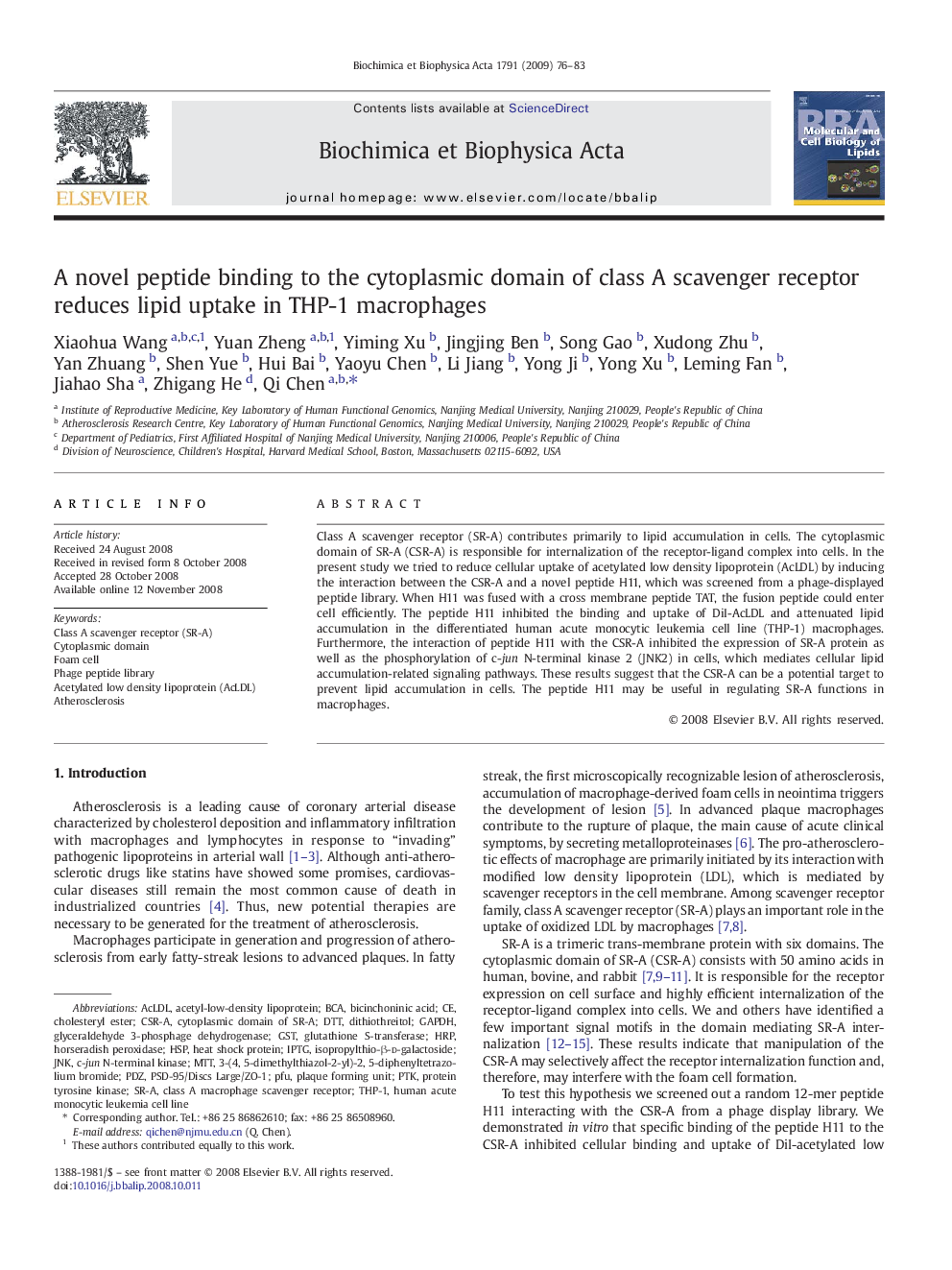| Article ID | Journal | Published Year | Pages | File Type |
|---|---|---|---|---|
| 1949709 | Biochimica et Biophysica Acta (BBA) - Molecular and Cell Biology of Lipids | 2009 | 8 Pages |
Class A scavenger receptor (SR-A) contributes primarily to lipid accumulation in cells. The cytoplasmic domain of SR-A (CSR-A) is responsible for internalization of the receptor-ligand complex into cells. In the present study we tried to reduce cellular uptake of acetylated low density lipoprotein (AcLDL) by inducing the interaction between the CSR-A and a novel peptide H11, which was screened from a phage-displayed peptide library. When H11 was fused with a cross membrane peptide TAT, the fusion peptide could enter cell efficiently. The peptide H11 inhibited the binding and uptake of DiI-AcLDL and attenuated lipid accumulation in the differentiated human acute monocytic leukemia cell line (THP-1) macrophages. Furthermore, the interaction of peptide H11 with the CSR-A inhibited the expression of SR-A protein as well as the phosphorylation of c-jun N-terminal kinase 2 (JNK2) in cells, which mediates cellular lipid accumulation-related signaling pathways. These results suggest that the CSR-A can be a potential target to prevent lipid accumulation in cells. The peptide H11 may be useful in regulating SR-A functions in macrophages.
